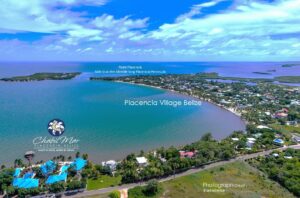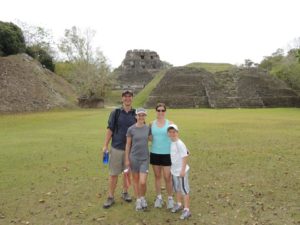If you took a helicopter ride over Belize’s lush mainland and cayes, you might notice what looks like Hawaiian hula skirts fanned out into circles on the ground below. Upon closer inspection, you’ll discover that those circles are actually skillfully-woven roofs made of palm fronds that are so tightly wrapped, layered and interfaced, rains can pour down but anyone standing beneath this umbrella of vegetation will stay dry.
These thick umbrellas—known as a palapas—are part of the beauty and history that is Belize, and if you’d like to see some of the most beautiful ones, visit Chabil Mar Resort, an award-winning all-inclusive resort located in Placencia where the art of the palapa has been taken to new heights.

At the end of the resort’s long pier stands a serene palapa that invites guests to relax and de-stress (see pic above). Not far away is Chabil Mar’s other palapa: it tops a gathering place considered the epicenter of Chabil Mar Resort’s social scene. Finding a seat at the Kaleidoscope Bar & Lounge (see pic below) isn’t easy as the night moves on and stars come out, so get out from under the bar’s palapa if you want to see them!

Why are palapas frequently a part of Belize’s landscape? Because they represent history and the clever use of natural resources, pairing tropical charm with practicality: Mayan settlers built thatch-roofed huts thousands of years ago for shelter and to this day, their ancestors still craft them. If you’d like to follow in their footsteps, our instructions can help. Chances are, you’ll finish faster than they did since you’ve probably got some nice tools!
1. Acquire five bamboo poles—four poles of equal height that are tall enough for people to stand under, and one that’s at least 12-inches longer for the center. Use a table saw to trim one or more to make lengths uniform.
2. Decide where to build your palapa. Dig a post hole in the center of that area. Next, dig four post holes at equal distances from the center pole and from each other. They should be at least 6- to 8-feet apart.
3. Follow package instructions to mix cement with water so it resembles thin pudding. Fill each post hole half-way with cement mix. Use a large funnel to direct the liquid cement into the holes.
4. Put one pole into each hole and then verify all heights to be certain they’re uniform; make adjustments before the cement sets if necessary. Fill each hole to the top with the remaining cement mix.
5. Craft makeshift supports of scrap wood to brace the poles. You can nail or screw one to the bamboo if necessary. Use mounds of earth to brace other scrap wood so poles don’t budge while the cement hardens. Wait at least 24-hours before removing supports.
6. Make a frame. Measure the distances between the outer four poles. Cut lumber to size and attach them to form a square. Next, measure the distance from the four outer poles to the center. Cut wood to size and attach with screws. When you look up at the finished frame, you should see spokes radiating to the center.
7. Cover the frame with pre-cut sections of plywood so there’s a solid base for attaching palm fronds.
8. Use an industrial stapler to attach palm fronds, starting at the outer edges and moving into the center by fastening layer upon layer of fronds. Work in a circle. As space decreases, you may have to cross, weave or prune fronds for a good fit. The overlap should be so solid, you can’t see an inch of frame or plywood.
9. Hold a palapa-warming party. Invite friends and neighbors over for tropical drinks beneath your work of art.
Visit our website chabilmarvillas.com for more information about Belize, and don’t hesitate to send us an email, or call US/CAN Toll Free: 1-866-417-2377, Local: (011-501) 523-3606, if you have questions or need help in planning a Belize vacation.












